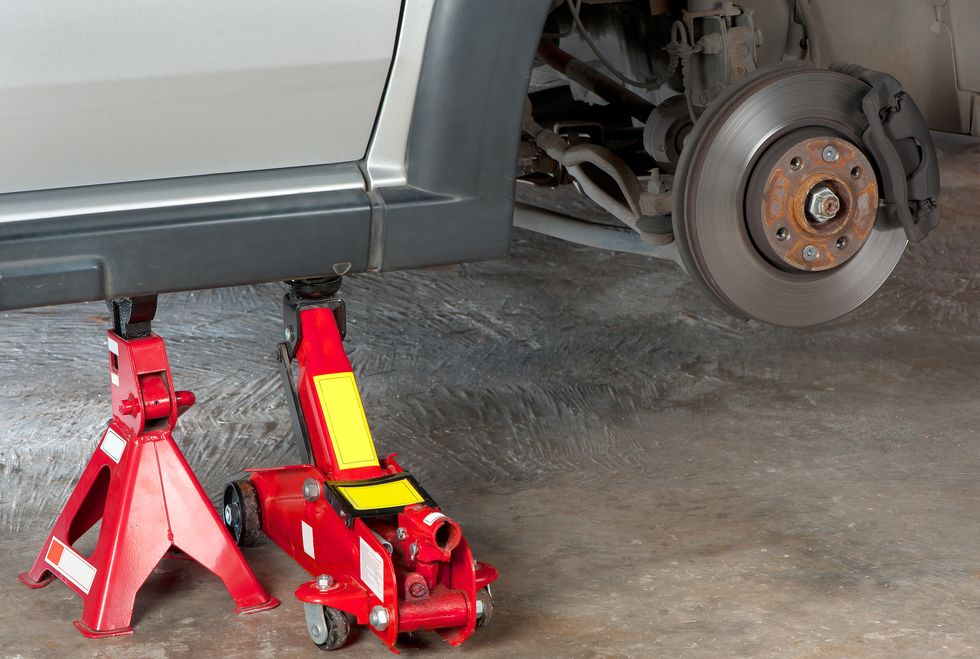Date:2023-12-21
When you hear that thumpa-thumpa-thumpa sound while driving down the road, you know one of your tires is flat. And that means you'll soon be changing it yourself, if you're not lucky enough to have access to roadside service for your vehicle. If the mere thought of using a car jack makes you break out in a cold sweat—and it does for many people—not to worry! Just study these three video clips and follow these six simple steps, and you'll be able to get your vehicle in the air in short order without hurting it or—more important—you.
Step 1: Find a Safe Place to Pull Over
Get off the road and as far away from traffic as you can. If you're on a highway and near an exit, take it. The goal is to get off the road entirely and on to solid, level ground—such as a parking lot—where you can use a car jack safely. Failing that, you want to find your way to a road or street with as little traffic as possible, where you can pull off to the side, away from the flow of cars, and be on a spot solid enough to support a jack. If you're on a highway and can't get off, you'll just have to find the safest location you can; you can't drive for miles on a flat tire without destroying it and possibly damaging your vehicle. In that case, pull over to the right shoulder, as far off the road as possible. Make sure you're on a solid, level surface, so that the jack doesn't sink into the ground rather than lifting the car. A soft surface might also cause the jack to lean to one side as it's lifting the car, which can cause the car to fall.
Step 2: Secure Your Vehicle
Make sure the vehicle's engine is off, that it's in park, and that the parking brake is engaged. If you happen to have something that you can use to block a tire (a brick, a piece of wood, or a large rock will do), place it under the tire at the opposite corner of the car from the corner you're going to jack up (e.g., if you're jacking up the right front, block the left rear tire). This is further insurance that the car will not roll off the jack. If you have passengers, it's a good idea to have them exit the car, but it's not absolutely necessary.

Step 3: Locate the Jack and Jacking Points
In most vehicles, the jack is stored in the trunk or in an SUV's wayback, under the cargo-floor cover. After you find it, you need to locate the jacking points on the car's body, where the jack engages. The jacking points for most vehicles are reinforced metal ribs specifically designed to safely lift the vehicle. On most vehicles, there are four jacking points. They're located under the car's rocker panels, just behind the front wheels and just ahead of the rear wheels. In the above video, our Car and Driver tech is pointing to the right front jacking point on the Hyundai Sonata sedan we're about to lift. To be sure about the jacking point locations for your vehicle, check your owner's manual.
Step 4: Position the Jack
Most car jacks have a slot at the top, on their engagement flange, that slips onto the jack point's reinforced rib—but your car may have a different setup, so check your owner's manual to be sure you understand exactly how your jack works with the jacking point. In the above video, our tech needs to spin the jack down first, so it can fit under the car before he begins jacking it up.
Step 5: Jack Up the Car
Turn the jack handle clockwise slowly until the flat tire comes off the ground. Take your time and make sure that the jack remains positioned straight up and down as it lifts the car. You don't want the jack leaning, because it won't hold the car securely that way. If you're lifting the car to get under it, to do some work, or to change the oil, you must place a jack stand under the rocker panel near the jack and snug it up to the car's body. This will ensure that the car cannot fall on you, should the jack slip or fail entirely.
Safety note: If you're jacking up the car to work on it at home, it's a good idea to use a more robust floor jack—the kind with the long handle that you pump (pictured above). This is the type of jack used at repair shops and in the pits at car races, because it's much stronger and more stable than a car's onboard jack. A jack stand placed in the proper position is pictured below, alongside a floor jack (with its handle removed).
Step 6: Lower the Car
When you're ready to lower the car, slowly unwind the jack handle in the opposite direction (counterclockwise) until the car's tire is firmly in contact with the ground and you can remove the jack. Return the jack to its storage location, secure it, and you're almost ready to roll. But before you fire up the engine, don't forget to remove whatever you used to block a tire, or you might think the parking brake is stuck on when you try to drive off.
Autotai Auto Equipment Manufacturing Co., Ltd.
Factory: N.3,Jiye Road, technological & industrial zone, Lepin town, Sanshui district,Foshan
PC: 528137
Phone: +86 757 83600030
Fax: +86 757 83600031